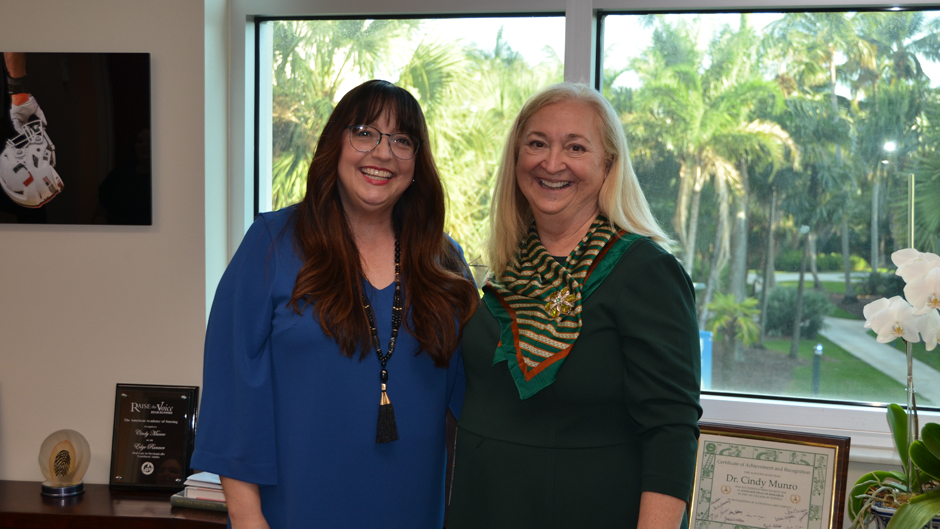Alumni from the School of Nursing and Health Studies are already making their mark around the world. Now at least one aims to make her mark outside of this world.
Aubrey Florom-Smith, BSN ’09, PhD ’13, is conducting groundbreaking research on how space travel affects the human body and mind, including a phenomenon known as “space asthenia,” which may cause astronauts exposed to long-term isolation and confinement in low gravity to experience physical discomfort, weakness, fatigue, mood and behavior changes, and other effects, potentially resulting in diminished performance or mission failure.
It is for her ambitious achievements in the realm of aerospace nursing research that Florom-Smith was named the University of Miami School of Nursing and Health Studies 2020 Alumna of Distinction.
“The founder and CEO of Minerva Nursing Science, Dr. Florom-Smith has worked with NASA-funded scientists, a former astronaut, aerospace physicians and nurses, aerospace engineers, cognitive and industrial psychologists, human factors engineers, and she plans to work with space architects later this year,” said SONHS PhD candidate Sameena Sheikh, who introduced Florom-Smith during the March 5 award ceremony sponsored by VITAS Healthcare. “As one of the few nurse scientists leading the field of aerospace nursing, her ultimate goal is to improve astronauts’ and other space participants’ well-being during missions by better understanding isolation and confinement-associated threats, such as space asthenia, and developing countermeasures that can be translated to terrestrial interventions.”
Florom-Smith first encountered virtual reality as an isolation and confinement countermeasure for astronauts while working at Dartmouth College’s Space Medicine Innovations Lab. Until recently, she managed augmented reality medical training research funded by the Department of Defense. Both experiences inspired her to launch Minerva, where she focuses on advancing innovative technologies and new models related to aerospace health care.
This fall she hopes to test her novel space asthenia instrument as part of a three-month moon mission analog in Greenland led by a team of Danish space architects. “Wind speeds will reach 90 kilometers. Temperatures will be as low as -30 degrees Celsius. There will be constant sunlight, and they emphasize that there will be polar bears,” said Florom-Smith.
Learning about the adverse effects of living beyond Planet Earth, and how to treat those effects—using individually tailored virtual and augmented reality countermeasures, for example—will be critical as more people travel to space stations or off-world habitats in the future, Florom-Smith noted.
“As space travel becomes more common and accessible, I believe nurses will play a critical role in ensuring optimal space travel health and performance through aerospace nursing research and evidence-based clinical care,” she explained. “We will also engage in translating space countermeasures to interventions for our patients on Earth.”
During her presentation, “Connecting the Dots: My Journey to Aerospace Nursing Research,” Florom-Smith traced her lifelong fascination with space—from watching the Apollo 11 moonwalk as a toddler over 50 years ago to her present-day excitement about the prospect of NASA’s Artemis mission landing the first woman astronaut on the moon by 2024. “I never lose my enthusiasm for space. I never stop tearing up when I see a launch. Every single time I cry,” she said. “Human space exploration, like nursing, embodies the very best of who we are as human beings.”










